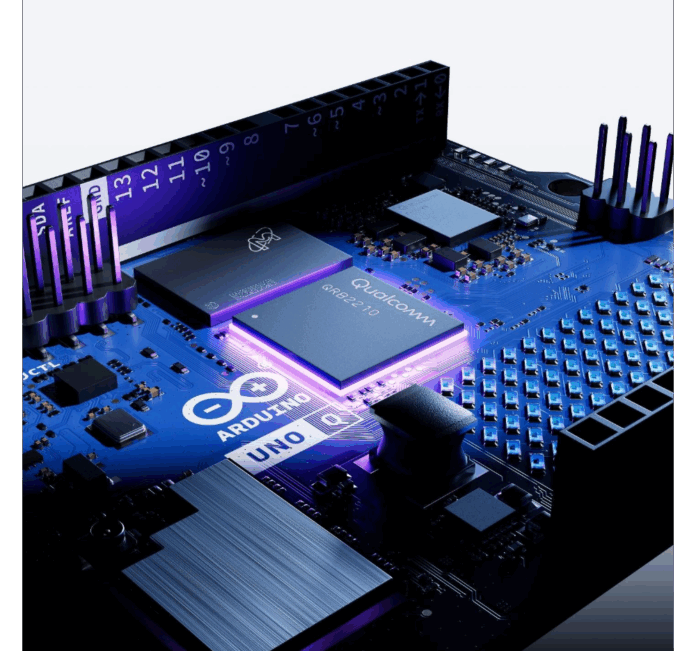Editor’s note: I took a few weeks off from the column — and logged around 21,000 air miles mostly going to conferences but also seeing Lady Gaga with my wife — but we’re back! With that: I’m in the habit of bookmarking on LinkedIn, books, magazines, movies, newspapers, and records, things I think are insightful and interesting. What I’m not in the habit of doing is ever revisiting those insightful, interesting bits of commentary and doing anything with them that would benefit anyone other than myself. This weekly column is an effort to correct that.
At its recent Snapdragon Summit in Maui, Qualcomm CEO Cristiano Amon laid out the company’s vision for the “ecosystem of you.” The idea is that your constellation of personal devices — smartphone, watch, earbuds, glasses and PC — seamlessly work together, running multi-modal AI models using highly-personalized context to deliver agentic experiences. Given Qualcomm’s presence in all of these device categories, and its ongoing execution against a significant diversification strategy, the company seems well positioned to benefit from AI at the far edge: you.
This consumer framing for edge AI is also applicable to the vast, variable world of industry — a key piece of the aforementioned diversification strategy. Just as you and I would benefit from context-aware, distributed intelligence, so too would cameras, robotic arms, sensors and other devices present anywhere from mines and farms to warehouses and factory floors. As it builds out the “ecosystem of you” for consumers, Qualcomm is in parallel building out an ecosystem of things for industry.
Beyond designing the systems-on-chip that enable AI processing on edge devices, Qualcomm has been gradually bolstering its software, services and developer-facing offerings to ensure hardware-based innovation translates into real-world impact for end users. Over the past 19 months, the company has struck deals to acquire, or deepen its partnership with, Foundries.io, Edge Impulse, Advantech and, in the latest, Arduino. We’ll unpack the detail but the theme is clear: Qualcomm is extending its leadership in edge semiconductors into a full-stack edge AI platform that fuses hardware, software and community.
Three acquisitions, one platform
In March 2024, Foundries.io was acquired by the Qualcomm Innovation Center. The idea was to strengthen Qualcomm’s position in the embedded computing industry. Foundries.io “provides valuable expertise in the development and deployment of open-source software and is helping to successfully commercialize products that incorporate a Linux distribution.” The company operates as an independent subsidiary. Qualcomm characterized the acquisition as meant “to expand our open-source expertise and speed product commercialization with Qualcomm Linux.” Foundries.io “abstracts the complexities of developing and updating Linux-based IoT and edge devices.”
A year later, Qualcomm acquired Edge Impulse, which specializes in “developing edge AI solutions and deploying them to edge devices across the global hardware ecosystem…[and] enabl[ing] developers and enterprise teams to streamline and accelerate the process of building, delivering and optimizing embedded AI and machine learning solutions using real-world data.” The acquisition also brought more than 170,000 developers using Edge Impulse’s approachable, low-code approach to AI/ML for edge devices into Qualcomm’s orbit.
Two months later at Computex in Taiwan, Qualcomm announced a collaboration with Advantech “to advance AI-driven IoT applications…enabling deeper integration of [Qualcomm’s] cutting-edge technologies into Advantech’s edge computing and edge AI platforms — accelerating the deployment of intelligent solutions across industries.” The two companies said they would “foster developer innovation” and “deliver a developer-oriented tool chain.”
And this week, Qualcomm announced an agreement to acquire open-source hardware/software firm Arduino. In addition to the acquisition, Qualcomm and Arduino, which will maintain its independent brand, announced the new UNO Q, a “dual-brain board” that uses Qualcomm’s Dragonwing platform, and the Arduino App Lab, a “development environment that unifies the Arduino journey across real-time OS, Linux, Python and AI flows — simplifying build, test and deployment.”
Qualcomm’s Nakul Duggal, group general manager for automotive, industrial and embedded IoT, tied it all together: “With our acquisitions of Foundries.io, Edge Impulse and now Arduino, we are accelerating our vision to democratize access to our leading-edge AI and computing products for the global developer community. Arduino has built a vibrant global community of developers and creators. By combining their open-source ethos with Qualcomm Technologies’ portfolio of leading edge products and technologies, we’re helping enable millions of developers to create intelligent solutions faster and more efficiently — including a path towards global commercialization by leveraging the scale of our ecosystem.”
A blueprint for AI everywhere
Taken as a whole, these moves form a purposeful plan. Foundries.io serves as a foundational unified Linux base, Edge Impulse is the engine for AI development, Advantech is a bridge to bring these capabilities to industry and Arduino gives reach to millions of developers from hobbyists to professionals.
To a degree, this is a vertical integration play and it is a bit of a roll-up, but it’s more ambitious than that. Qualcomm is forging the connections between devices, developers and data in a way that’s tuned for individual edges. The big picture here is that while the cloud is teaching machines to think, the edge is teaching them to understand.
Returning to Qualcomm’s diversification strategy, Amon earlier this year discussed the edge AI tailwind the company was riding, and how it fits into the larger evolution from providing SoCs to providing platforms. “Our advanced connectivity, computing and edge AI technologies and product portfolio continue to be highly differentiated and increasingly relevant to a broad range of industries…We expect that while training will continue in the cloud, inference will run increasingly on devices, making AI more accessible, customizable and efficient. This will encourage the development of more targeted, purpose-oriented models and applications, which we anticipate will drive increased adoption, and in turn, demand for Qualcomm platforms across a range of devices.”
Whether it’s an ecosystem of you or an ecosystem of things, Qualcomm seems to understand that intelligence belongs close to context and data, and that’s what the edge is all about.

